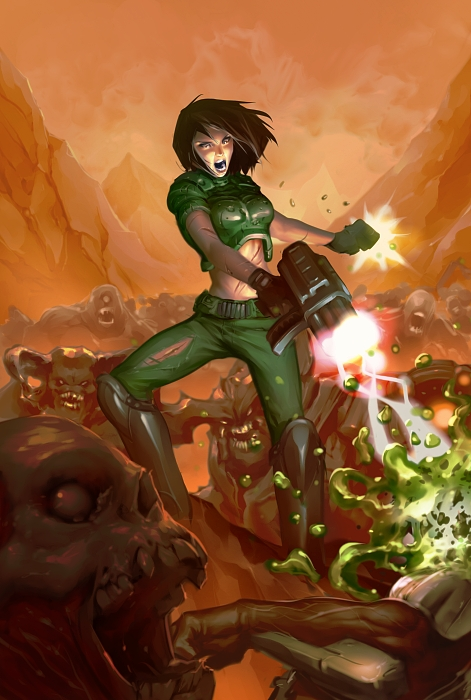Alright, I am certainly not an expert when it comes to transformation of caterpillars into butterflies but this is very likely a massive and incorrect oversimplification of the process.
I mean this makes it sound like if you poke a hole into the cocoon it will just drip goo out until its empty.
Happy to be corrected by a real expert but very likely transformation occurs in coordinated small steps and not just everything melts and rematerializes.
So from what I can find, you’re right in that it’s not 100% goo, but it’s not really “coordinated small steps either”. It’s a messy fluid process that all sort of happens at once. When caterpillars are inside their chrysalises, they first digest themselves by releasing an enzyme. But this enzyme doesn’t break down everything. Some organs are completely dissolved and completely new ones are grown from the goo, but most only partially, and are moved around remodeled into their butterfly counterparts. As for the entirely new parts, like wings, they’ve actually been inside the caterpillar since before the cocoon as these tiny clumps of cells call imaginal discs, and it’s only during metamorphosis that they begin to develop into their full size organ. It’s really cool, and you should read more about it. I’m no expert, so I’m sure I explained it badly, but here’s some good links.
https://www.ncbi.nlm.nih.gov/pmc/articles/PMC6711294/
https://downloads.hindawi.com/journals/psyche/1897/062863.pdf
So they only become half goo, with internal organs flying around
So Dr. Manhatten while learning how to reform.
I’m not an expert, but there’s a good overview of the process here: Nat Geo. You can de-paywall it at the usual places. They describe it more as “an organised broth full of chunky bits” as some organs don’t break down.
It’s a fascinating process either way.
So… it’s more a stew than a soup?
….in a pod?
Here’s the paper:
https://journals.plos.org/plosone/article?id=10.1371/journal.pone.0001736
Insects that undergo complete metamorphosis experience enormous changes in both morphology and lifestyle. The current study examines whether larval experience can persist through pupation into adulthood in Lepidoptera, and assesses two possible mechanisms that could underlie such behavior: exposure of emerging adults to chemicals from the larval environment, or associative learning transferred to adulthood via maintenance of intact synaptic connections. Fifth instar Manduca sexta caterpillars received an electrical shock associatively paired with a specific odor in order to create a conditioned odor aversion, and were assayed for learning in a Y choice apparatus as larvae and again as adult moths. We show that larvae learned to avoid the training odor, and that this aversion was still present in the adults. The adult aversion did not result from carryover of chemicals from the larval environment, as neither applying odorants to naïve pupae nor washing the pupae of trained caterpillars resulted in a change in behavior. In addition, we report that larvae trained at third instar still showed odor aversion after two molts, as fifth instars, but did not avoid the odor as adults, consistent with the idea that post-metamorphic recall involves regions of the brain that are not produced until later in larval development. The present study, the first to demonstrate conclusively that associative memory survives metamorphosis in Lepidoptera, provokes intriguing new questions about the organization and persistence of the central nervous system during metamorphosis. Our results have both ecological and evolutionary implications, as retention of memory through metamorphosis could influence host choice by polyphagous insects, shape habitat selection, and lead to eventual sympatric speciation.
Yes, a paper that they retain “memories”. I didn’t doubt that. I doubted the “turns completely into goo and then solidifies as butterfly” part. And from what I can tell after skimming the introduction of the paper this is only covering the behavioural aspect.
It’s a good question! :) Just put the paper here just in case.
So, if you happen to know them… I have a question.
How doped up on hormones are they? Like, maybe they’re just having the time of their life, Brain riding high on dopamine or whatever butterfly’s have for pleasure, and they don’t even realize what’s going on.
Then, when they pop out and realize what they’ve been doing run off to the shower trying not to think about it
What’s surprising? You can basically poke a hole in any living thing and goo will drip out if the hole is large enough.
OP pointed out the fascinating specialty of complete transformation with an intermediate liquid state.
You can basically poke a hole in any living thing and goo will drip out if the hole is large enough
That’s everyone’s morning routine, no?
deleted by creator
I turned on my phone flash light to find my phone…
We all have those days, friend
I could have lived my whole life, happy, never knowing ‘angry’ butterflies existed or that they could become angry. Horrible large winged shit flies.
Neon Genesis Evangelion finally making sense







